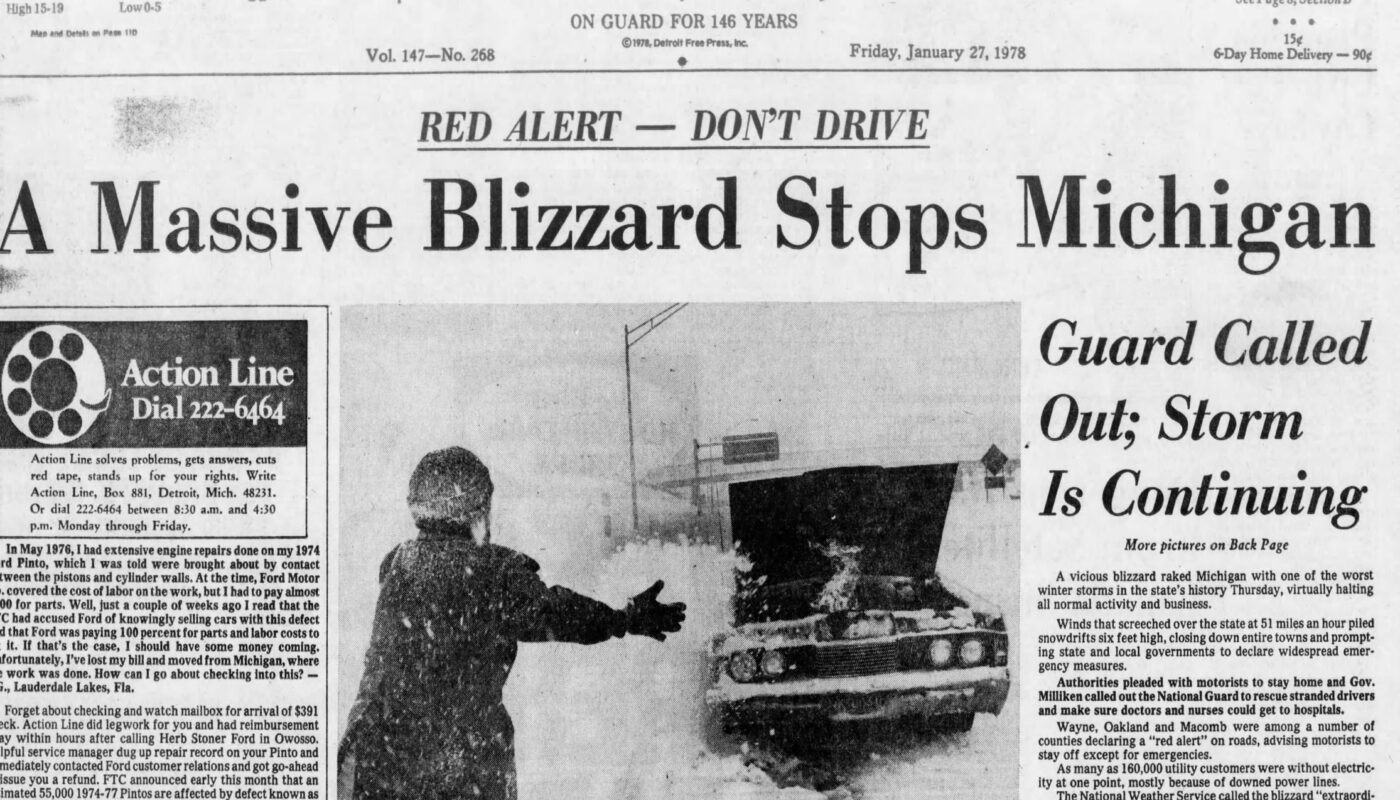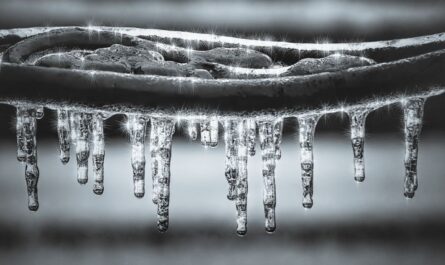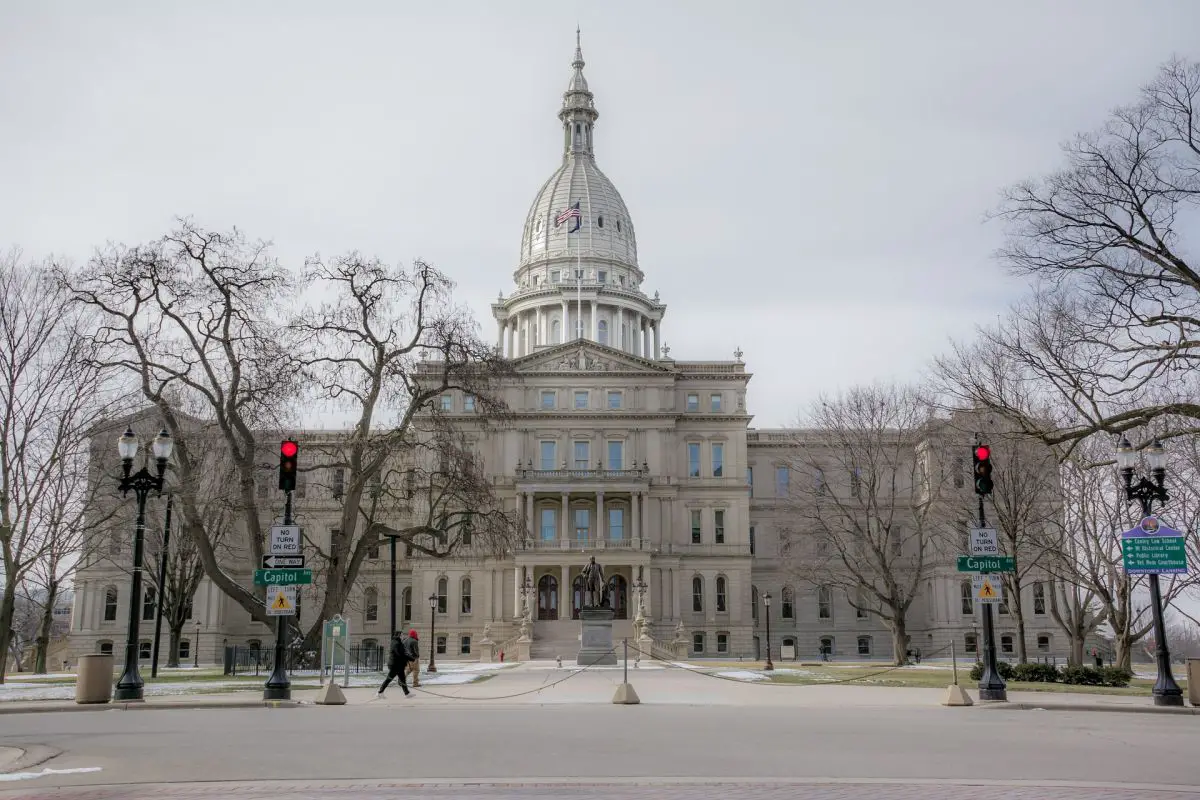The Blizzard of 1978 is etched in the memories of many who experienced it. This storm, often called the “Storm of the Century,” brought West Michigan to a standstill and left an indelible mark on the lives of those who lived through it. In this article, we will delve into the blizzard’s details, its impact on the community, and the stories of resilience that emerged from the snowdrifts.
The Onset of the Storm
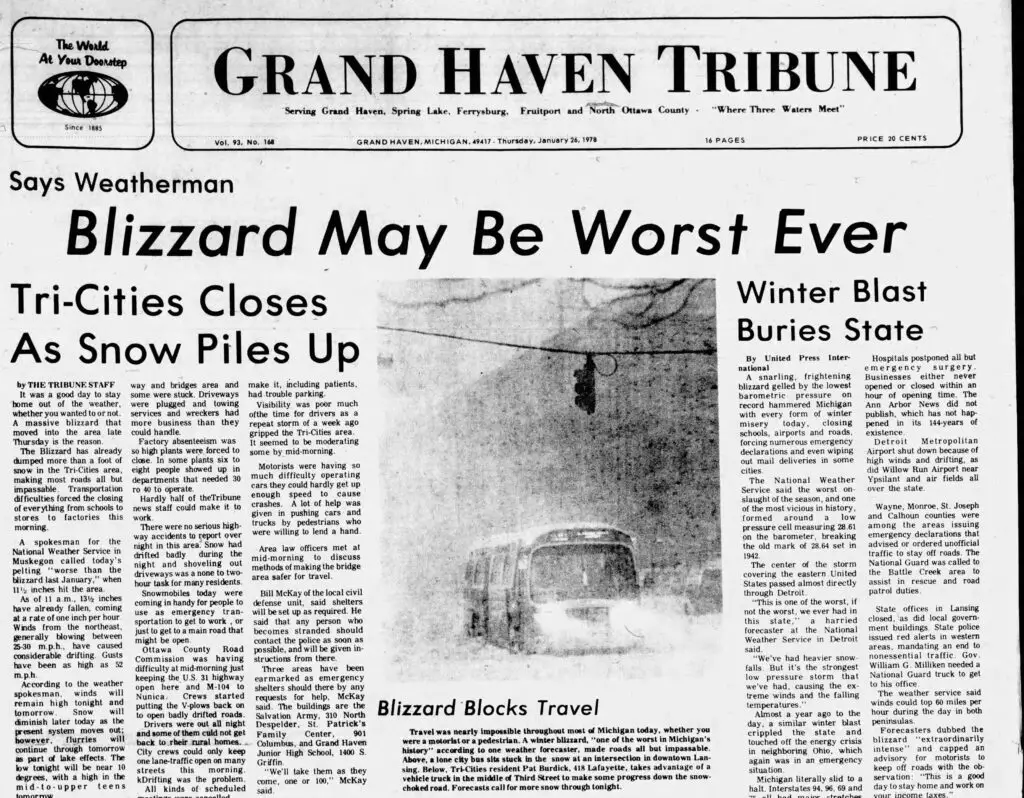
On January 25, 1978, the weather took a turn for the worse. What began as a rainy day quickly transformed into a winter nightmare. By early afternoon, almost all of West Michigan was under a state of emergency as snow began to blanket the region. The storm was relentless, with heavy snowfall and high winds that made conditions treacherous.
Many residents were caught off guard. A well-known meteorologist, Bill Stefan, initially forecasted six to ten inches of snow. He recalled thinking that ten inches was an enormous amount, and he wasn’t sure how accurate his prediction would be. However, as the snow continued to fall, it became clear that the storm was far more severe than anyone had anticipated.
Video: The 45th Anniversary of the Blizzard of 1978
Snowfall and Conditions
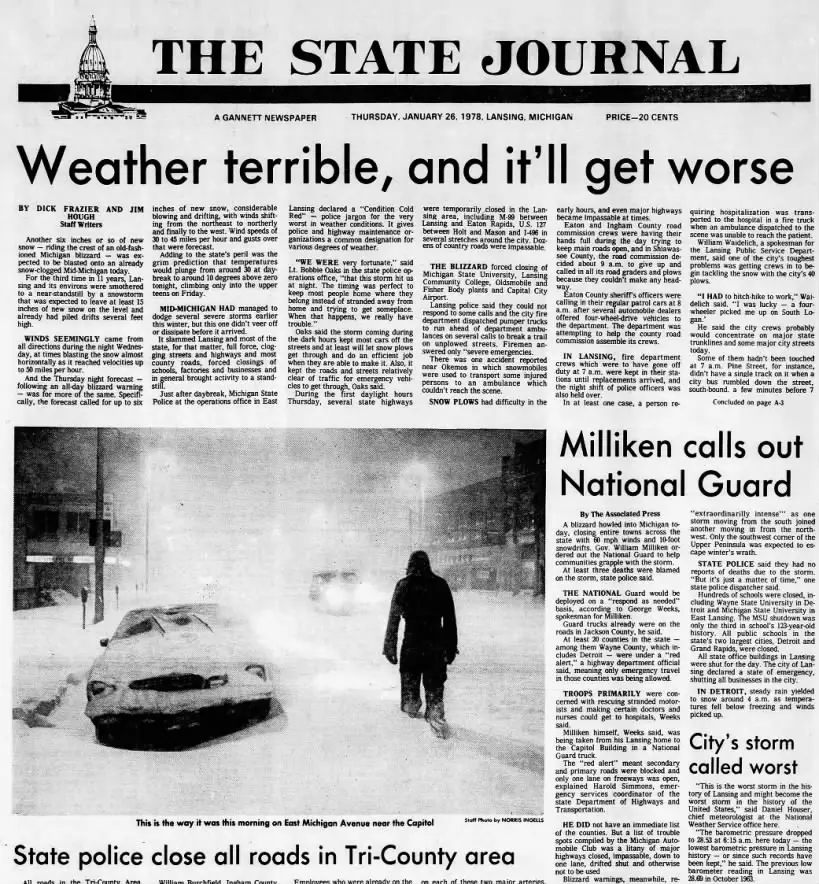
Blizzard of 1978 – Lansing State Journal
Article from Jan 26, 1978 Lansing State Journal (Lansing, Michigan) Blizzard, Michigan
The blizzard unleashed an astonishing amount of snow across the region. Reports indicated that some areas received drifts as high as 15 feet, creating impassable roads and isolating many communities. The sheer volume of snow was overwhelming, with over 100,000 vehicles abandoned on Michigan roadways.
As the storm raged on, transportation became a significant challenge. Snowmobiles and four-wheel drive vehicles became the primary means of getting around. Emergency responders relied on these vehicles to transport stranded individuals and deliver essential supplies. The military also stepped in, using their vehicles to rescue those trapped in their cars.
Impact on Emergency Services
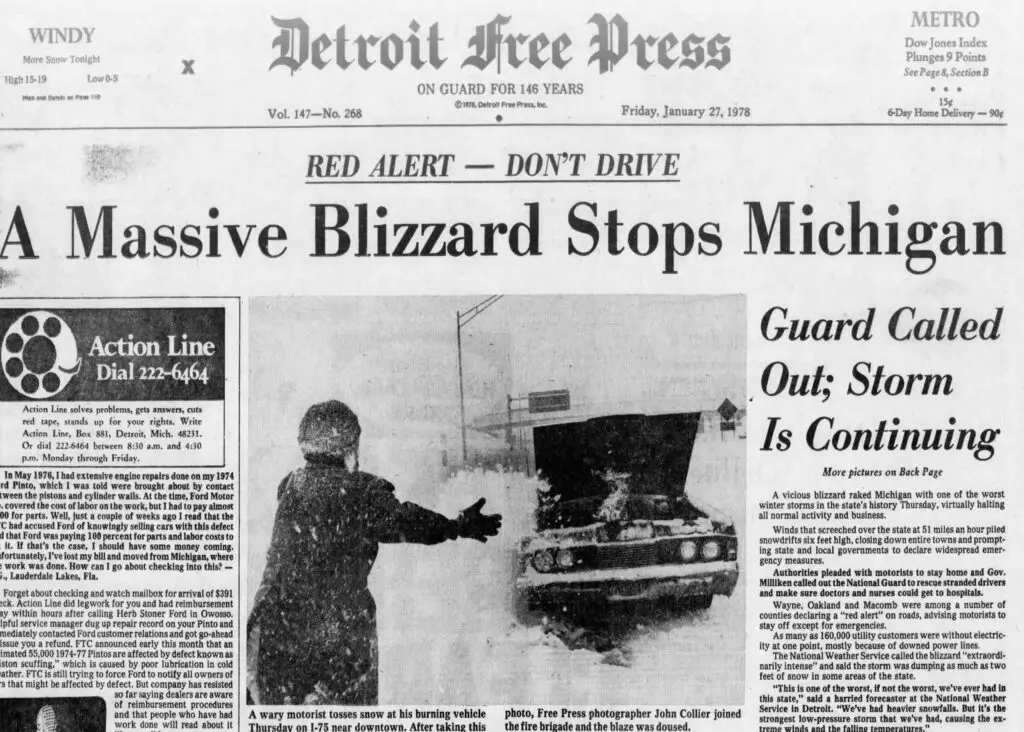
The blizzard severely impacted emergency services. Hospitals struggled to get staff to work, and ambulances found it nearly impossible to respond to emergencies. Many medical professionals had to rely on neighbors with four-wheel drive vehicles to make it to their shifts. The situation was dire, with people suffering from heart attacks and other medical emergencies waiting for help.
Bill Stefan himself faced challenges getting to the station. His car was snowed in, forcing him to walk a mile to work. This dedication to providing updates and information kept the community informed during the storm, as they turned to him for guidance in a time of uncertainty.
Community Response
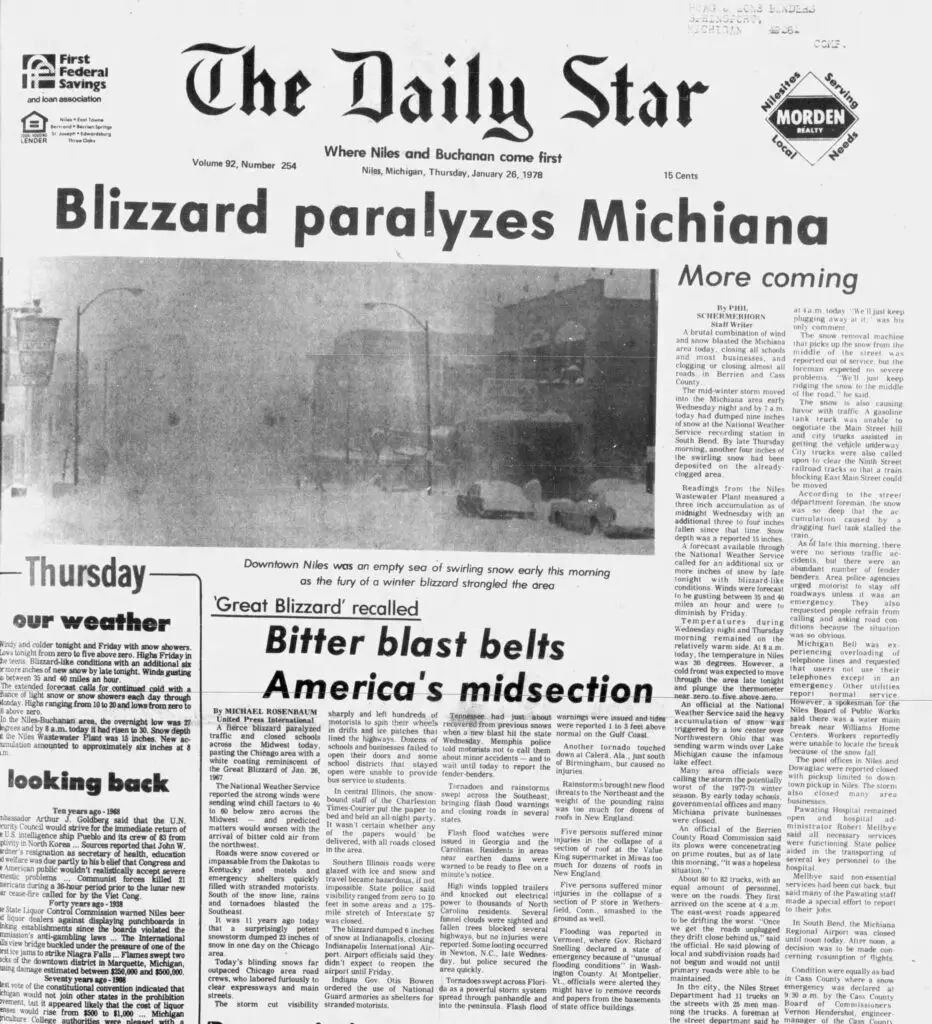
Despite the chaos, the community came together in remarkable ways. Neighbors helped each other, offering rides to those in need and sharing resources. People found creative ways to entertain themselves while stuck indoors, often gathering around the television to watch Bill’s updates.
The camaraderie and spirit of resilience were palpable. Many residents expressed a sense of awe as they watched the snow pile up outside their windows, creating a winter wonderland unlike anything they had ever seen. For some, it was a moment they would never forget.
Recovery and Aftermath

Once the storm subsided, the recovery process began, but it was slow. Roads were blocked, and it took time for plows to clear the way. In some areas, it took weeks for the snow to melt completely. Life began to return to normal, but the memories of the blizzard lingered on.
In the months following the storm, many residents shared their stories, and the blizzard became a topic of conversation for years to come. Bill Stefan’s continuous coverage during the storm turned him into a local celebrity, as people recognized him in stores and on the street.
Lessons Learned
The Blizzard of 1978 taught many valuable lessons about preparedness and community resilience. It highlighted the importance of having emergency plans in place and being ready for unexpected weather events. Advances in forecasting and emergency operations since that time have improved our ability to respond to such storms.
Bruce Smith, a meteorologist with the National Weather Service, noted that while comparable storms could happen again, the advancements in technology and communication would significantly enhance response efforts. The ability to forecast storms days in advance allows for better preparation and awareness within the community.
Reflecting on the Experience
For those who lived through the Blizzard of 1978, the experience remains vivid. Many have shared their stories, describing the challenges they faced and the ways they adapted to the situation. Some found joy in the unexpected snow days, while others faced hardships that tested their resilience.
As we reflect on this historic storm, it’s essential to remember the strength and unity that emerged from the chaos. The Blizzard of 1978 may have been a daunting experience, but it also brought people together in ways that continue to resonate today.
Final Thought
The Blizzard of 1978 will forever be remembered as a significant event in West Michigan’s history. It serves as a reminder of the power of nature and the importance of community. As we move forward, let us carry the lessons learned from that storm and continue to support one another in times of need.
For those interested in learning more about weather phenomena, you can explore topics such as lake effect snow and how it affects our region. Understanding these concepts can help us better prepare for future storms and appreciate the beauty and challenges of winter weather.

